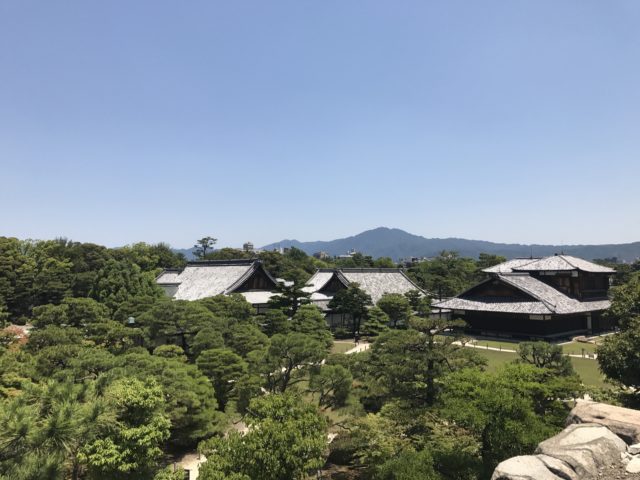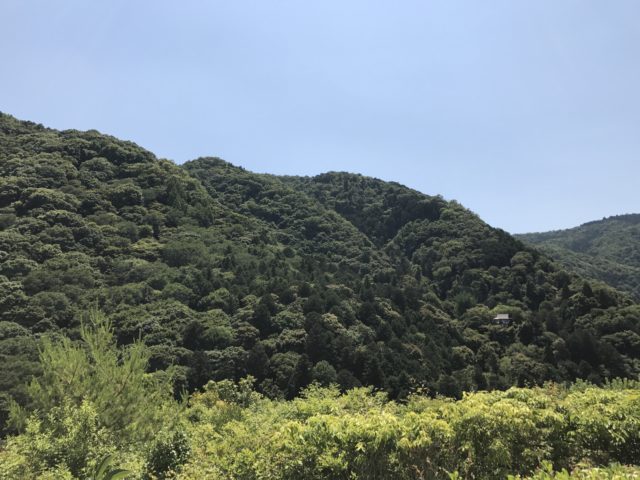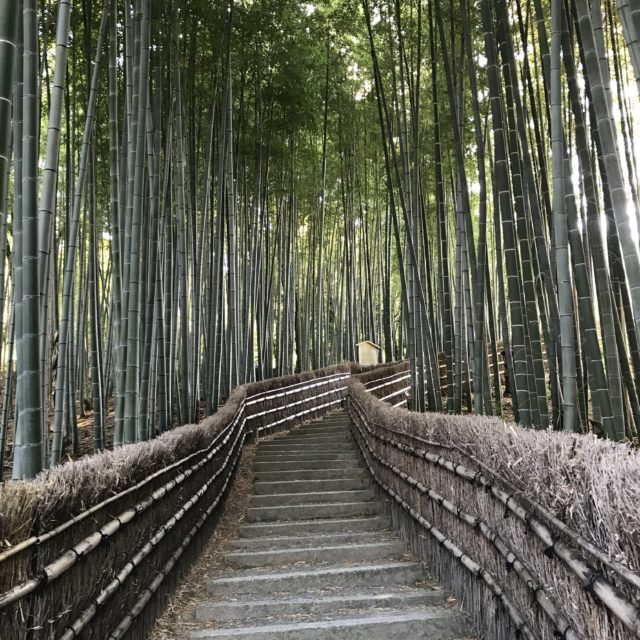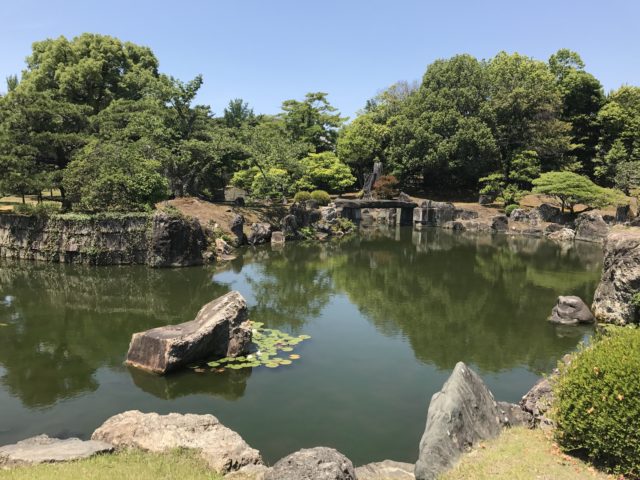Last week I went on a five-day trip to Japan with my boyfriend and two friends. Our plan was to spend three days in Osaka and two days in Kyoto. In Japan almost every municipality has at least one temple. Kyoto, being a large cultural center, has several hundred. So we wanted to take a break from the city and explore the different temples and gardens.
Our first three days in Osaka were filled with walking, eating, shopping, and even more eating. On our way to Kyoto, I noticed how much quieter the city got. On our first night we made a rough itinerary to follow the next morning. We had listed places that were near our hotel and ones that were further away. We planned to start at a palace that was close and then travel to the furthest one and make our way back down.
That morning, it was hotter than we expected but we continued on anyway admiring the views the garden had to offer and the peacefulness of the temples. If you are planning on visiting temples, gardens, and palaces in Kyoto, I’ve listed some below along with key spots that stood out to me.
Nijo-jo Castle

What is it? Built in 1603, the Nijo-jo Castle was used by Shogun Tokugawa leyasu who unified Japan after a long period of civil war. What followed was the longest period of peace and prosperity in Japanese history, which lasted for about 15 generations. That is a pretty big deal so you can just imagine the stature of this castle. There are prime spots within the castle that reflect the golden age of Japanese architecture.
Key spots: The Nijo-jo Castle is so grand that it has an outer moat that surrounds the entire perimeter as well as inner moat that houses the Honmaru-goten Palace and gardens. Overall, there are two gates, two palaces, a keep tower, and two gardens within the entire castle. Stepping foot into the castle, I couldn’t believe the size of the entire property. As we followed the guide map I thought about how it must have felt like to live within those walls, surrounded by so much beauty. One of the palaces, the Ninomaru-goten Palace was mainly where the Shogun would live and entertain guests. Across the 33 rooms, the walls had paintings of leopards, tigers, and trees. My personal favorite feature of the palace were the nightingale floors. The floors were constructed in such a way that they would squeak when someone walks on them. With all the people walking through the corridors, it was like music to my ears.
Tenryū-ji Temple
What is it? Set in the Arashiyama district in Kyoto, the Tenryū-ji Temple is a world heritage site. It was built in memory of Emperor Go-Daigo with Zen master Muso Soseki as the founding head monk.
Key Spots: When visiting the temple you have the option to tour just the garden or both the garden and buildings. Since we had just come from looking at palaces we decided on admiring just the garden. The Sogen pond garden was simply amazing. As we entered the garden we were greeted by a pond surrounded by bonsai trees and thoughtfully placed rocks. We also noticed bright orange fish swimming in the water. We weren’t quite sure if they were koi or carp but we watched them anyway. As we walked through the different paths in the garden we saw trees with red leaves as well as purple and blue flowers scattered everywhere.
Okochi Sanso Villa

What is it? This villa was formerly the estate of a silent film era actor named Okochi Denjiro. The garden villa sits on the south side of Mount Ogura and was built over a 30-year period. Okochi deeply admired Zen philosophy and carefully decorated the garden with different trees: pine, cherry, and maple.
Key spots: When we entered the villa we immediately noticed signs that guided our path. These led us to high points of the property where we would have views of the entire garden while others offered views of the city. There were two stops that stood out to me. The first was a view of a mountain. I couldn’t believe its grandeur and the different colors of nature. On the side of the mountain we noticed a hut. Initially thinking it was a house, we later found out that it was another temple. The other view that was memorable was from a little hut. We sat in the hut for a few minutes admiring the view of the garden and the city. We sat there in silence listening to the sounds of nature mixed with the noise from trains and buses. At the end of the path, we were rewarded with a hot cup of green tea and a matcha treat.
Adashino Nembutsu-ji Temple

What is it? Adashino Nembutsu-ji is a Buddhist temple. There are about 8,000 Buddhist statues placed around the temple in memory of those who passed without family. Here, a priest named Kukai used to bury the dead and repose their souls. Every year, on the evenings of August 23 and 24, more than 1,000 candles are offered to these stones for their departed ancestors’ souls.
Key spots: We were definitely surprised to see the number of Buddhist statues scattered across the temple but the one spot that caught our attention was the bamboo grove. At the back of the temple is a path that leads to the bamboo grove that reminded us of The Tale of Princess Kaguya. The tall bamboo stalks blocked out the sun and gave us some shade. Walking through the grove, there was a cool breeze and as we were the only ones there we took our time going through the path.
Follow Preen on Facebook, Twitter, Instagram, Snapchat, and Viber
Related stories:
How Traveling Alone Can Be a First-Class Experience
How Japan’s Princess Mako’s Marriage Is Sparking a Feminist Debate on Imperial Rule
The Hot Spots to Visit Outside Taipei
5 International Getaways to Spruce up Your Instagram Feed


